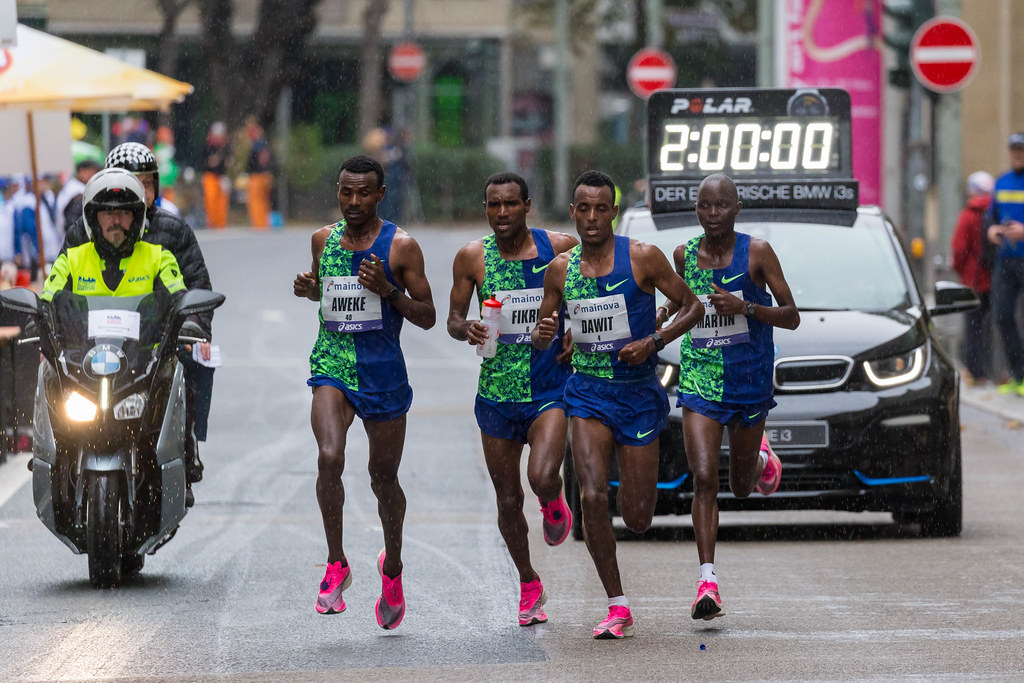by Staff Writer Anika Arora
On Oct. 12, 2019, three-time Olympic medalist Eliud Kipchoge became the first man to run a sub two-hour marathon, completing 26.2 miles in a record-shattering 1 hour 59 minutes 40 seconds. The method to his madness: Nike’s ZoomX Vaporfly shoes.
According to the Wall Street Journal, male runners using the Vaporflys have run the five fastest marathon times in history. In a controversial decision, the International Association of Athletics Federations permitted the use of these shoes in the upcoming 2020 Tokyo Olympics. However, the Vaporflys disadvantage those who are not sponsored by Nike and must resort to shoes with less advanced technology.
Although the specific model that Kipchoge and Kosgei wore during their world-record runs, the Vaporfly NEXT%, will be prohibited since the height of the sole exceeds 40mm, versions of the shoe with smaller soles will be allowed. According to Nike, the Pebax foam and carbon fiber plates embedded in the soles add a light, jumpy boost to the feet and provide both stiffness and stability to runners. Furthermore, the carbon-plated technology recycles a percentage of the energy that the runner puts into them. These two elements combined have allowed Vaporfly users to improve their times by up to 4.2 percent, according to Business Insider. This is not something that regularly happens in sports — it is virtually impossible for an athlete to improve their performance so drastically without technological aid. Thus, Nike’s shoes unethically enhance athletes’ performance as a form of mechanical doping. With this precedent, running will soon evolve into an arms race between sporting companies to produce the best shoe. Athletes, instead of focusing on improving their skill and technique, may begin to rely on equipment and technology to succeed.
This recent controversy is similar to a situation which began in 2008. Over the span of two years, professional swimmers broke more than 130 world records across all distances and strokes. Speedo’s LZR Racer swimsuit line was behind the newfound success, as its polyurethane-based material compressed the body into a more streamlined shape and trapped air to give swimmers extra buoyancy. By the 13th FINA World Championships in 2009, the International Swimming Federation had banned the suits. The current issues with Nike’s Vaporflys are the same. The International Olympic Committee should not wait until more world records are broken to declare that the shoes give unfair advantages to Nike-endorsed runners. World records should be reflective of an athlete’s natural ability, not their gear.
What makes matters worse is that elite distance runners endorsed by other companies may not get the chance to wear shoes as technologically advanced as the Vaporflys at the Tokyo 2020 Olympics. The only chance at fair competition would be if Nike’s competitors created upgraded shoes as well. However, World Athletics issued a new rule in January that athletes won’t be allowed to wear prototypes that haven’t been available to the general public for at least four months. As the Olympics are just six months away, this gives companies just two months to create a performance enhancing shoe like Nike’s. Taking everything into consideration, the wisest decision to level the playing field would be to ban the Vaporflys in competitive play, at least until after the 2020 Olympics.
With this new breakthrough in shoe technology, elite athletes may be going into the Olympics questioning whether they have a chance of keeping up with Nike shoe clad runners. Current athletic policies seem to reward the runner with the better shoes, not the better skill.


Be the first to comment on "Nike Vaporflys Will Give An Unfair Advantage at 2021 Tokyo Olympics"